Intro & Interview by Farran Golding
Collages by Requiem For A Screen
Photography by Mike Heikkila
Run Painting by Andrew Durgin-Barnes
In the blink of an eye, we’ve had a decade of Bronze, a homie video series turned brand that reshaped the runtime required to deem a project “full-length.” Quasi transcended their birthright as a successor to Alien Workshop, carved out a singular path, and released two of the best longform productions in recent memory. The moniker “HUF” now covers not only the guy whose video parts defined less is more, but a longstanding brand.
Dick Rizzo – or Richie to those who know him — has in one way or another, intersected with these moments in contemporary skateboarding, which makes it all the more surprising that his story hasn’t been more thoroughly explored.
You grew up with Drop-In Skatepark, which is where you met Josh Wilson and Paul Young. Was being a local there the first time you felt connected to any sort of scene?
Yeah, definitely. Besides Drop-In, there was an outdoor skatepark in Ridgewood, but that was pretty much it for parks in my zone of north Jersey. There was a pretty strong scene at that time. People were going out to film local videos. It doesn’t seem like that anymore, in terms of people skating spots, but that’s almost a product of Instagram, in that kids would rather film on an iPhone at the skatepark.
Was Justin White and the Popills guys one of those crews? I’ve seen New Thirsty, but I don’t know much else about them.
Justin is from Bergen County, which is where Josh and I are from. He went to school in the city and made his way back to Jersey. When he was making those Popills clips, they were maybe some of the first — would “edits” have been the term back then? They were the first of those I saw with, like, arthouse shit.
He had a website and whenever he’d make a new clip, which was every couple of months, there’d be a Quicktime player on the site. Not YouTube, which is pretty sick. He had art on his website too, and that was dope.
There was build up around New Thirsty for years. When it came out, I was 12 or 13, so that was definitely a groundbreaking video for kids in my whole zone.
How long had you been skating by then?
Probably three years, at least. I was starting to understand things, in terms of watching skate videos, and that was the first to open my eyes to skating in my surrounding areas. It gave me an idea of what street skateboarding is and should be like.
My buddy Jersey Dave was a part of that video. He actually taught me how to do tricks. Like, he taught me how to rock-to-fakie at a skate camp at Drop-In. There were people who worked there, or at their shop, and they’d put me on to videos once I started to show I cared about that. By the time that skatepark closed, I was already spending most of my free time in the streets, trying to film.
Did having slightly older friends make skating New York easier?
Absolutely. My mom was super cool about it. She brought me to skate the city on one of my first times; she literally drove me out there and we went to the Banks. The classic story. For most skaters [from nearby], their parents driving them to the Banks is their first trip to New York. Skating the city after that, I guess I always hung out with an older squad, but it didn’t feel like I was “the younger one.”
What year are we talking here?
Maybe 2007 or ’08. My mom brought me there and hung out for five or ten minutes. My brothers were there too, we all got into skating together, but they bailed on it pretty fast.
They went to get lunch and left me there. I can’t believe that, looking back. Not that it was a super sketchy place at the time, but I was pretty young. Like, “Oh, word? It’s cool for me to be here alone? Alright, I’m down…”
Rob Campbell was there that day. Pretty much anytime I’d go to the Banks, you were guaranteed to see Rob Campbell. It was dope. He’s an aggressive skater and watching him in person was always, like, “You don’t want to be in that dude’s way.” But he’s super nice. He’d always look out and say what’s up if you saw him multiple times.
Fast forwarding a little, Paul told me your friendship was a perfect storm because as he was learning how to use a camera, you were really motivated. What stands out about that period of filming for what became Nevermind?
We were filming for a good few years before we started working on that video. I was figuring out how to apply myself to what I thought was worth filming. We’d talk a lot. Paul would put me onto certain things and spots, and I’d be down. We’d fan out over the Static videos early on. They were probably what shaped what we wanted to do.
Paul also mentioned that after Nevermind, you were kind of on fire with filming. Originally, you were billed for a guest trick in Josh’s Solo Jazz part, but he gave all his footage of you to Peter [Sidlauskas] and you ended up with a whole part. Is that how you remember it?
When I showed up on the night of the Solo Jazz premiere, I didn’t know that I had a part.
After Paul finished Nevermind, we were motivated. We were trying to get footage every day and in the process of filming his first video, I had started to get hooked up. I was flowed Habitat boards and HUF shoes, so every month I was trying to put together footage tapes to work my way up or show that I’m doing shit. I didn’t see how much footage I had in a timeline until that video came out, and we weren’t expecting me to have a part.
I was friends with all those dudes, but expected a couple of clips to make it, maybe. I really didn’t know what I was walking into that night. At the door, Peter was like, “Yo! You’re in the video. I promise.”
“Oh, erm, sick… Thanks.”
Then it came on and I had the first part. It was crazy and it was a legit ass premiere.
Although you got sponsored in high school, you went on to study at the School of Visual Arts for a little while. Did you care of making a go of skating or were you just enjoying what came with being good at it?
I definitely wanted to. I was pushing to go down that route and I knew I wanted to be in the city, so going to school seemed like the perfect plan. I was going there for graphic design.
I’d say anything I enjoy or that I’m passionate about came from what I looked at in skateboarding. I guess art through skateboarding was what lead to me to design: liking the way certain ads look, liking Don Pendleton’s art. I wanted to make shit and work with typefaces, but school just burned me out. I didn’t want to create anything.
Was that a result of not being inspired by the assignments, or the idea of making something to fit an assignment itself?
That’s a big thing with art school: you’re getting told what to make and you’re getting told how to make something. As helpful as that can be for someone taking a painting class, getting bombarded by, like, six different lecturers for six different things means you’re making so much that you don’t necessarily like or appreciate the work.
I’d say Solo Jazz was the point were Bronze really popped off, as far as with people I know, and then Trust got a lot of attention as the follow up. But was there a moment where you realized that what you guys were doing had reach beyond the people involved, your friends and New York?
I think after Solo Jazz, we were able to see the feedback from all of it, really. It was pretty trippy how fast that happened.
I think there was at least two years between them. When the talk of doing another video came out, it was pretty serious. There were actual trips, although I don’t think I ended up going on any of them.
I was still in school, so I was filming whenever I could after classes. There’s a good grip of night footage [in Trust], which was all stuff where it was, like, “I only have this much time, so I’ve got to try and get this.”
I definitely get how people can work all week, or be stuck in class, and when they get that little bit of time, they’re extra fueled. That shit’s sick. I liked that and felt like I accomplished something there. Even when it didn’t work out, it felt like I was doing a job I liked. That was probably when I realized I fuck with this way harder than what I was spending most of time doing – which was school.
The generation before you and I had Static, and the heads a little older than them had Eastern Exposure. Whereas between 2010 to ’15, there was Bronze, Johnny Wilson’s videos, the Sabotage crew, then Static IV and “cherry”. It felt like the east coast, especially New York, was having a moment and the attention stuck since.
Throughout the years of skating in the city, I’ve watched it — I wouldn’t even say “slowly get bigger” – in terms of skaters showing up. It took off to where, now, you can walk around anywhere and see groups of people skating.
Not many – if any – pros lived in New York. Twenty years ago, that was few and far between, whereas now it’s like an “industry” city. That was awesome to see. Like, “Word. I don’t even have to go anywhere else. I can do this here.”
Before, it did seem that the way to try and “make it” was that you’d have to go put in your time in California. Now, everything gets seen so widely – and Instagram definitely helped fuck all that up. I’d say that’s a positive thing. Besides that though, it does seem like a negative. Things are being blown out to a point where attention spans almost can’t – well – pay attention to a video that’s longer than five minutes.
From bookending Trust to getting on Quasi at the same time, you and Josh have always been presented as something of a duo over the years. Does it feel strange that you guys are always grouped together, or is it hard to imagine being in the position you’re in without him?
Nah, that’s not weird. He’s one of my best friends. We grew up together, and kind of “made names” for ourselves together, so I get it.
When I was initially hit up about Quasi, it was up in the air and Chad [Bowers] was asking what the deal was. It was [called] Mother at the time, he was asking what I was down for, and I was like, “If you’re trying to have me on the team, you should definitely have Josh too.”
Chad was like, “Dude, I was thinking that, but I didn’t know what was up” – because Josh had gotten on Hopps probably a couple months before that switch. Maybe it felt weird for him to jump so soon, but it was an opportunity.
We definitely push each other. There could be friendly rivalry with spots, but that happens with anyone who’s the same stance as you. If you’re just going skating or going on trips together all the time, whoever ends up calling a trick on a spot first is always a funny thing.
You weren’t short on coverage by the time Mother came around, plus having Josh and Paul involved must have felt like the perfect scenario. A part for your board sponsor is a different beast though, so did you feel pressure in that way?
Definitely. I wanted to go hard for that project. There’s probably a solid year’s worth of footage, which didn’t even make the cut for that video because it was deemed too old when it was being edited. You could see that I looked physically younger. There’s some shit I’d like to go re-film.
I think there was some expectation for you and Josh to go pro on the back of Mother, but it wasn’t until the next year you guys got boards. Quasi is solid in that regard. By the time Justin [Henry] turned pro, it felt very deserved. Does their way of going about that process make you strive for it harder?
I’d say so. Would it be weird to say that that’s “the old fashioned way?” Well, I guess the old-old-fashioned way would be people turning pro at 18 and if they weren’t, they were “too old.” But, definitely, with the period I grew up in, it seemed that’s the way it was. To get a board, you had to work for mad long.
It was a funny surprise. It was in February and some of the Quasi guys had flown into town. They were apparently there for a Vans thing. We went out to dinner, to a clam place that was down the street from Peter Luger Steak House and Gilbert basically put on this whole act about how he wasn’t fucking with the menu and wanted to go elsewhere. We left, walked outside towards the steak house and everyone walked in without saying shit.
“Alright, what’s going on…”
We went upstairs and sure enough, they surprised us with our boards.
I was recovering from an ankle injury, so I couldn’t skate for at least another month. I was just chilling for a while, with that board, looking at it on the wall in my room, like, “Nice. Fuck yeah.”
Talk me through the night you filmed the wallride off the loading dock at the Banks, your second-to-last trick in Mother?
That’s on the outside of the Banks. It had been skated back in the day; I think Jason Dill backside ollie’d in from the dock. Tino [Razo] might have been the first one to ollie it, actually.
For years it was weird to skate that because there’s a cop booth right there. I guess skaters tested it enough to realize that the cops usually don’t care. We slowly gathered up enough pieces of wood to ride down that dock because it’s all fucked up. I’d filmed a front 180 on it before doing that wallride a month beforehand, but didn’t realize that Dan Pensyl had done it, like, fifteen years earlier.
I’d already put the effort in at the spot and wanted to get something new on it. The wallride started out as – not necessarily a joke – but saying, “Imagine if you could just rip across that…”
It turned out it works. But I definitely just went and tried not to think about how it works.
Watching your parts, there’s a lot of attention to tricks into or involving banks. You don’t come across as the type of person who wants to skate whatever’s presented to them either.
I’d say so. Even from an early age, Paul and I would fuck around and refer to spots as an “urban huck.” We’d run that pretty hard. That’s the style of skateboarding, I guess.
I used to try film on things that are somewhat different, especially if it was the same trick, or try bring something new to a spot when I’d skated it before. I used to think about, like, “Do you wanna be the [insert trick] dude?” – way harder.
I didn’t actually make that connection with all your bank footage until Grand Prairie, where it felt the most prominent. How’d it compare to previous parts?
Working on this, I didn’t intend to strive away from other types of spots, but in the beginning months of filming, I added up a lot that all had some type of steep shit you could come into or go out of.
I wouldn’t want to put an injury into why that looked that way, but I did break my left ankle after Mother, around the end of 2018, so I had to come back from that. I wouldn’t say that made me more “low impact,” because I was never really jumping off of anything crazy anyway, but in the beginning, I was definitely looking at spots which were more just good looking.
Did you help pick the Frank Zappa song, “Valerie?”
Yeah. Chad [Bowers], who made the video alongside Jeremy Tubbs and Will Rosenstock, is a big Zappa fan. I am too. Growing up, I looked up to my dad’s taste in music. He’d play Zappa around my brothers and I, which is pretty funny because his taste could be pretty insane.
I guess I was on a Zappa kick. It took a while to find the right vibe of song because Zappa put out so much, in terms of different kinds of music. He covered all the bases, multiple genres, so to a point it was, like, “What style of song do I even want to skate to?”
When we found that, it was like, “This is the one. It works.”
With your Grand Prairie part being in black and white, and considering all those bank spots, it felt like something of a nod to Eastern Exposure. Then there was the Bobbito soundbyte in Mother, kind of throwing back to Mixtape. All in all, I feel like your output with Quasi could be taken as something of a love letter to the east coast.
I definitely fuck with hearing that and I appreciate it. I’d like to think people [who didn’t know why the parts may be that way] would ask or look into skateboarding like that. Because, nowadays, I feel like younger kids who get into it maybe just watch what’s in front of them and forget about it.
There’s also a bit of theme of location with the parts in Grand Prairie. Aside from obvious reasons making it a necessity, it’s fun seeing everyone off in their own pockets. Gilbert and Dane Barker in Richmond, Justin Henry in Ohio, Josh and you in New York. It’s makes the video into something of a journey between all these places.
Last year there was, of course, a hesitance to travel, but it’s nice being from a zone that’s so close to New York. I grew up skating spots all over Jersey, and even right now, I love going to skate Jersey and getting a break from the city. We’ve all got spots out there, know what the deal is, know what’s been done.
I wouldn’t call it a “breath of fresh air” but it’s nice to get out. A lot of people, when they travel to New York, they’ll just end up staying in New York and won’t stretch out and go into Jersey, even though it’s super close. That’s one nice thing about that: having spots in Jersey that aren’t super blown out.
Tony Soprano’s house being one of them?
Paul and I had never actually been there. That’s in North Jersey, not far from where we grew up but for some reason I’d never thought to check it out.
Paul and I, we went to this… I wouldn’t call it a “full-pipe,” but it’s like an airplane hanger: this huge, ring-shaped thing in this abandoned warehouse. We went to go to skate this thing and it was just a town over from North Caldwell.
“Fuck it, let’s go check out the Soprano house.”
We popped over and, sure enough, no one was home. I don’t think the owners actually stay there. They have some other property in Long Beach Island or some shit. We ran right up and we were peeking around, into the back and shit.
“Dude, hold up. I’m going to get my board…”

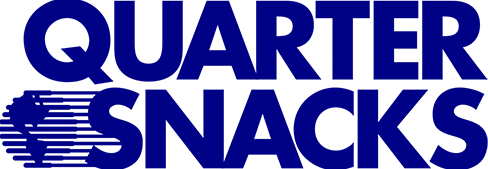




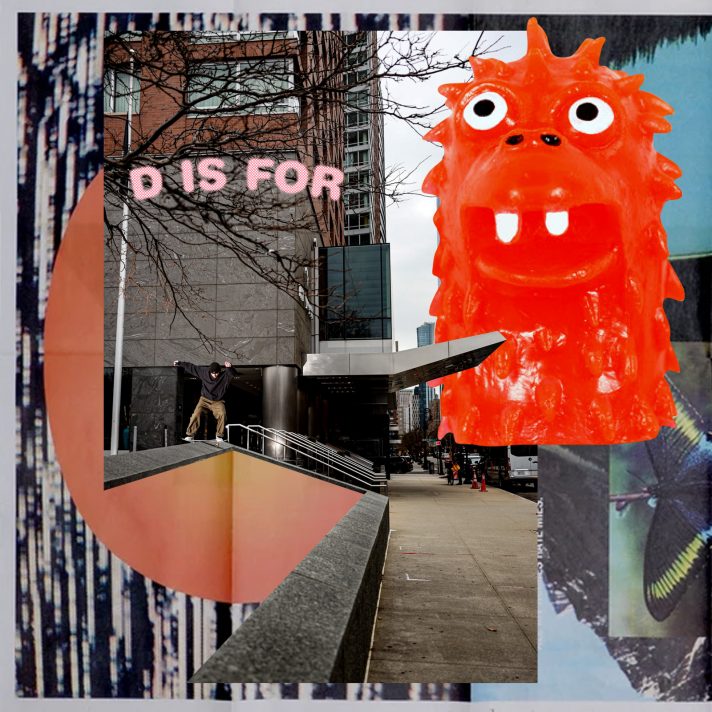
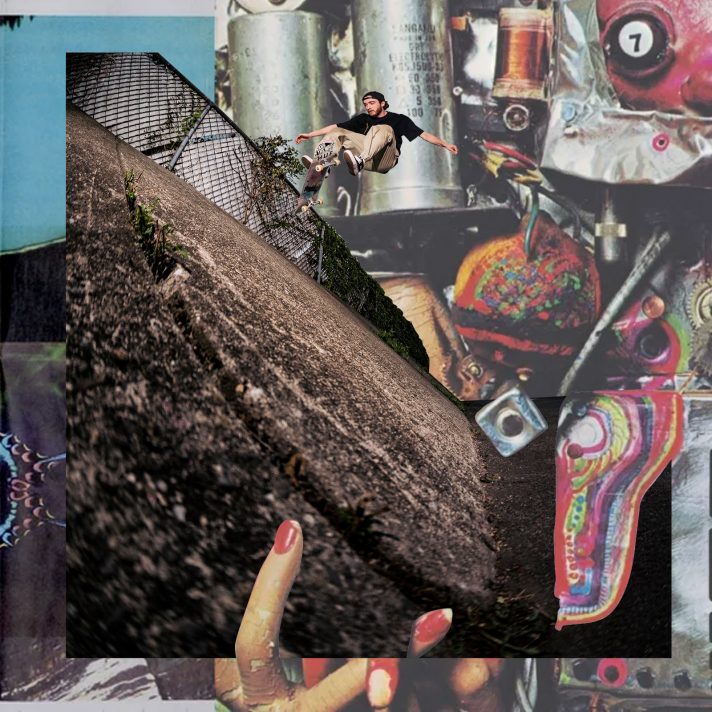
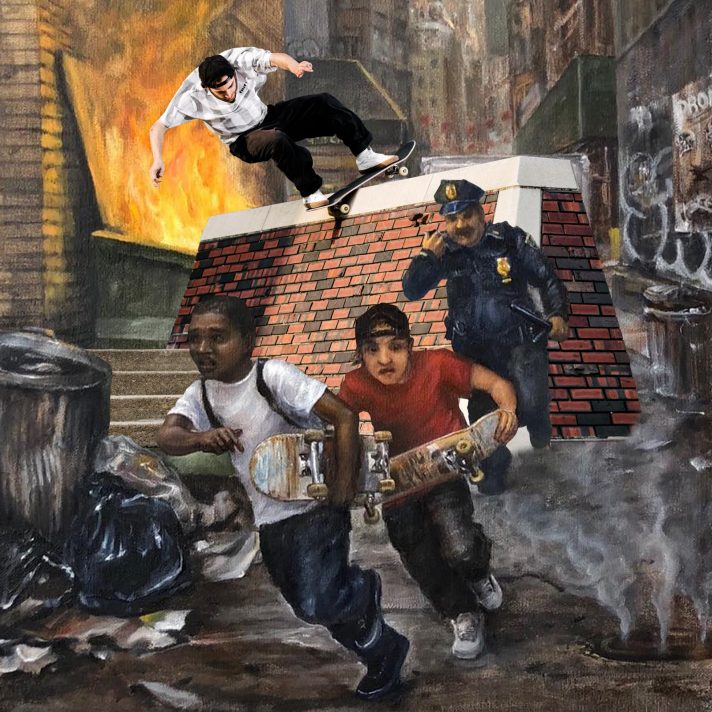
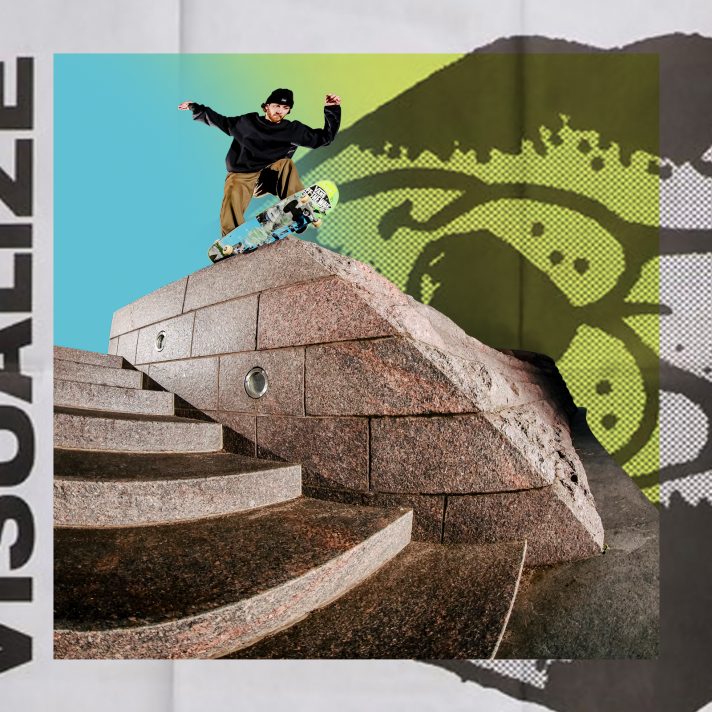
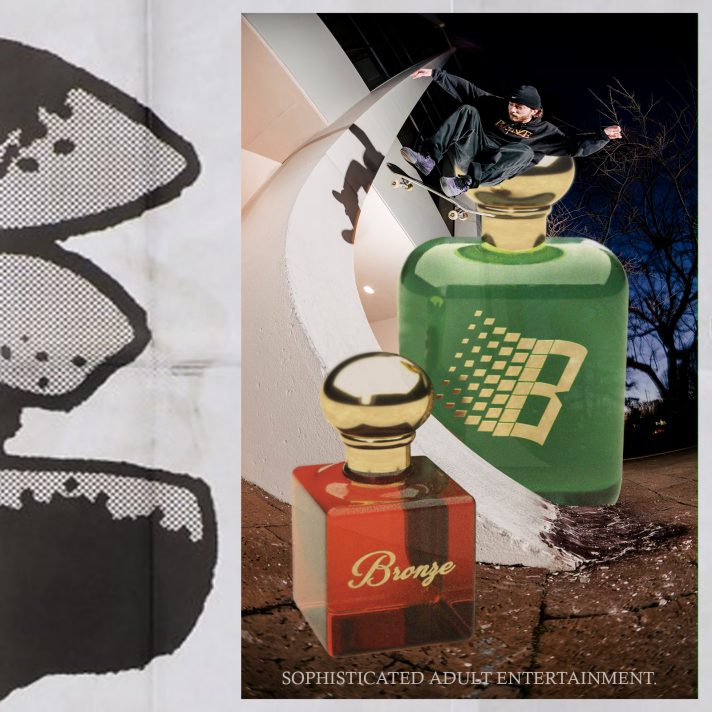
This is fabulous. Dick is my favorite.
this dude is the best. best style best spots best trick selection dick rizzo is the fucking GOAT thank you for finally giving him the spotlight QS.
I like that Dick rocks jackets. There ain’t enough jackets in skateboarding.
“Nice. Fuck yeah.”